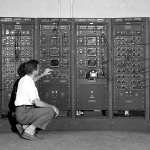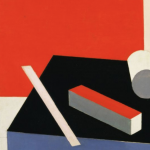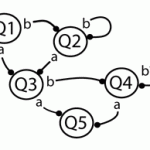2003
Komninos Zervos reviews the Hayles/Burdick collaboration, Writing Machines (2003), and reengages the cyberdebates (initiated in Y2K).
New media in a book, metafiction in hypertext: the printed book, as yet, is the more hospitable medium. (The New Media Reader; Figurski at Findhorn on Acid.)
2002
An argument against the collapse of categories by an author who has, yes, himself perpetrated a few codeworks.
A generous selection, with commentary and biographical background, for those coming newly to Matthias's work.
Rita Raley on the varieties of code/text, as discovered in the object-oriented aesthetic of Mez, Ted Warnell, Talan Memmott, Alan Sondheim, and others.
Virginia Kuhn reviews an essay collection - Cybertext: Yearbook 2000 - ambivalent about its own printed status.
Brandon Barr considers Loss Glazier's attempt at a hypertext poetics that moves beyond the link.
Adrien Gargett on Pierre Missac's unification of empirical biography and textual production, and the development of a "criticism of indirection" too often missing from Benjamin studies.
Entering the cyberdebates, Scott Rettberg moves beyond technique and proposes a more generative approach to hypertext, in which an author's intention and poetic purpose have a role.
2001
Following Katherine Hayles, Matthew Kirschenbaum agrees that materiality matters.
Jeff Parker contributes to the ongoing debate on electropoetics and invites readers to post their own link types and descriptions.
Lance Olsen reviews hypertext writing, past and present, by Robert Arellano.
A reluctant response to Markku Eskelinen's "Cybertext Theory: What An English Professor Should Know Before Trying," where Hayles discusses her admiration for Espen Aarseth's work... and the limitations within it she has perceived.
Considering hypertext as a subset of cybertexts, Markku Eskelinen offers seven examples of how to implement Espen Aarseth's seven-fold typology.
In response to Nick Montfort's review of Cybertext, N. Katherine Hayles coins an alternative term, cyber|literature.
Marjorie Coverley Luesebrink performs an autopsy on the hypertextual corpse.
2000
Nick Montfort reviews Espen J. Aarseth's Cybertext, which stakes out a post-hypertextual terrain for literary criticism and practice. Interactive excerpts from some of the cybertexts that Aarseth discusses are included.
1999
Stephanie Strickland unravels the crochet of categorizations used to contain data, and explores the texture and topography of a hypertext poetics.
Joseph Tabbi reads both the book and the hypertext version of Strickland's True North.



